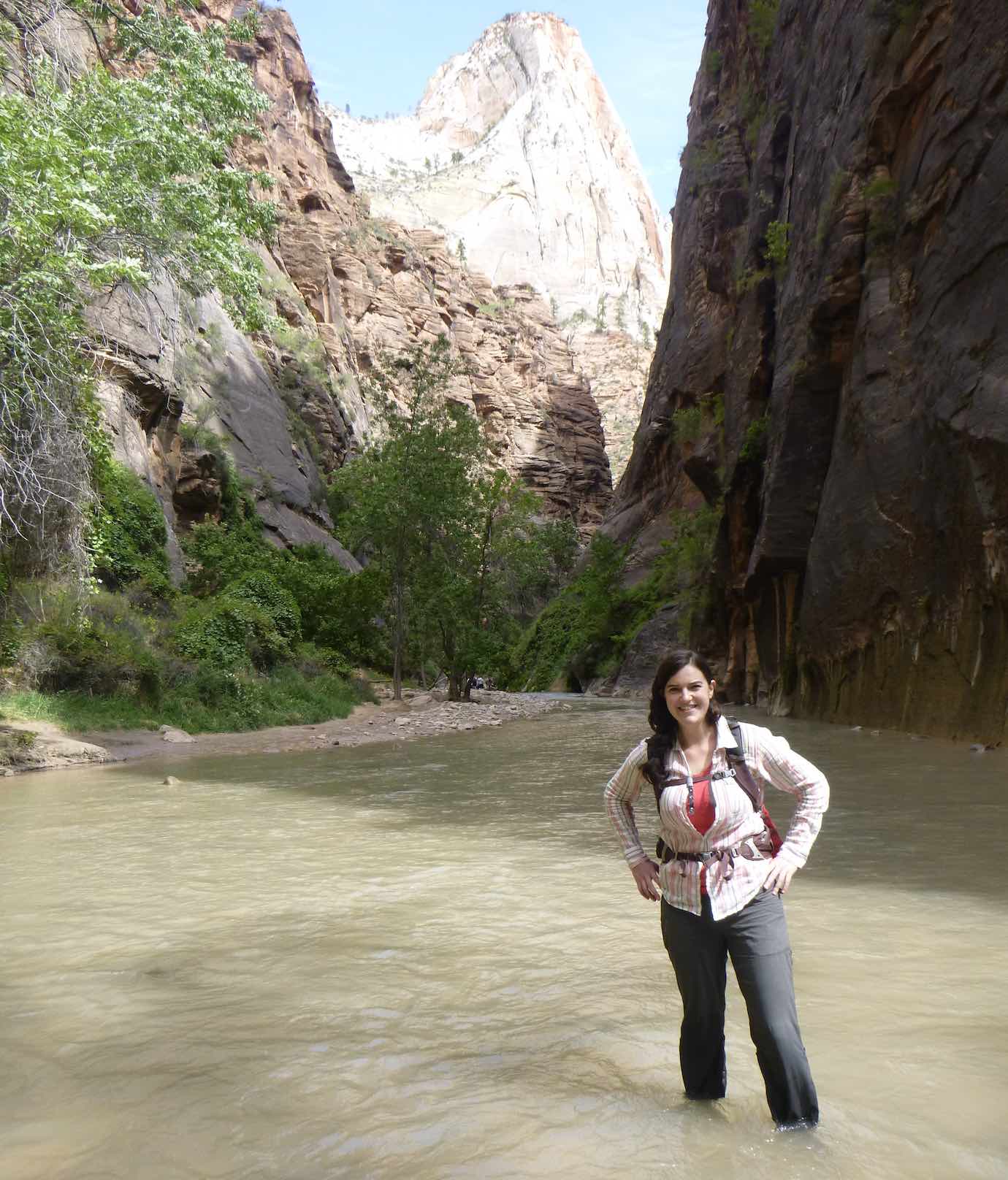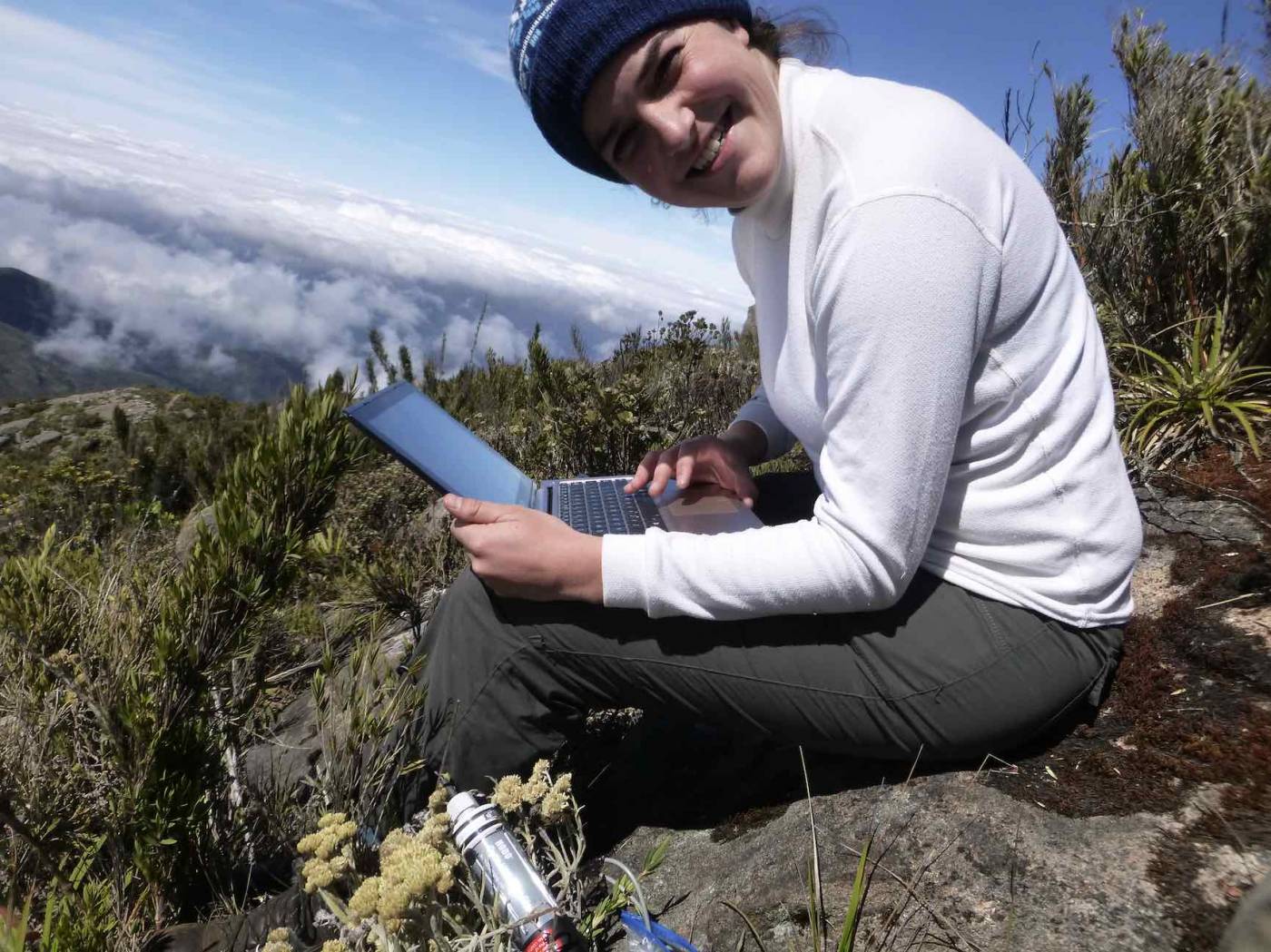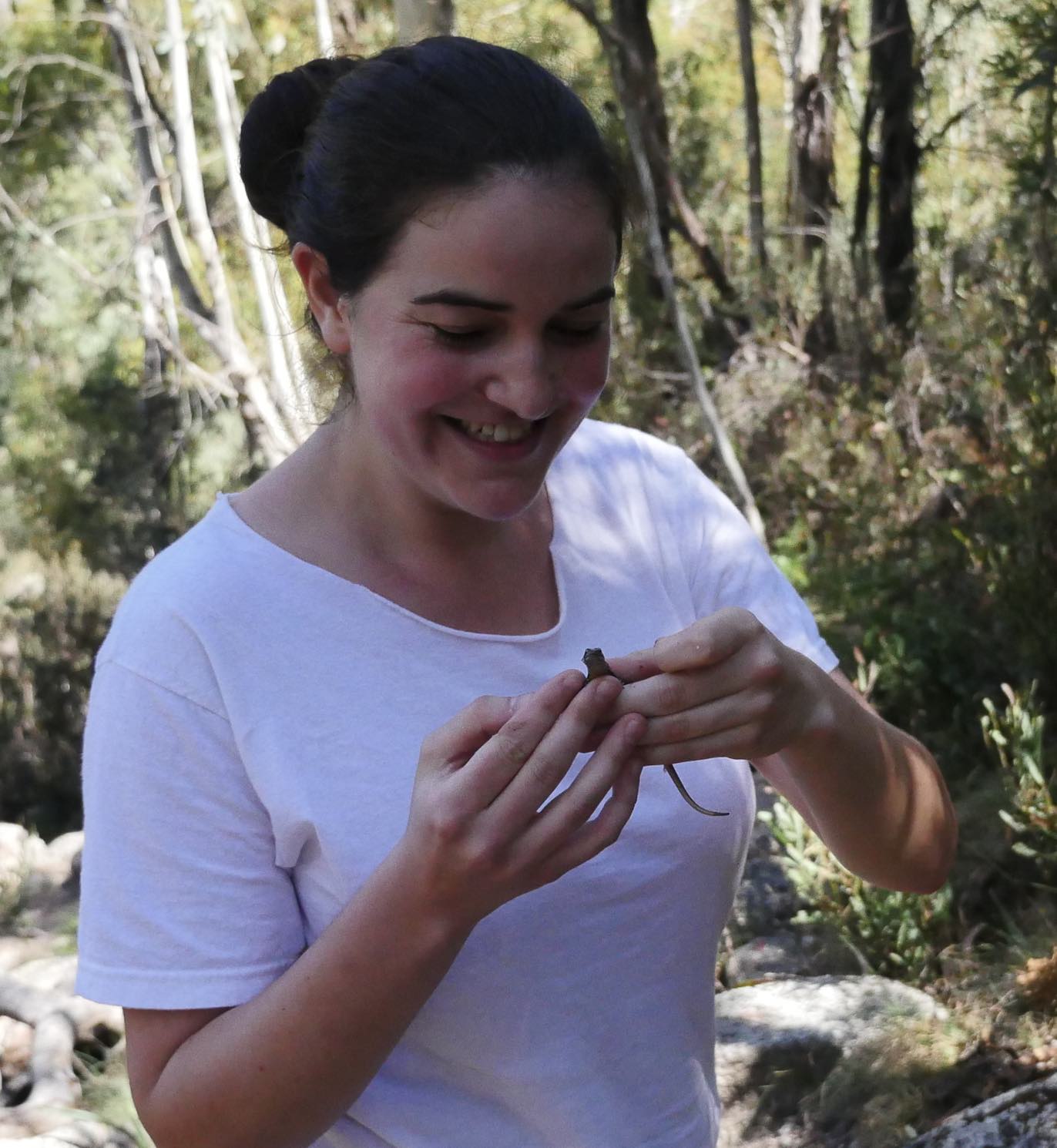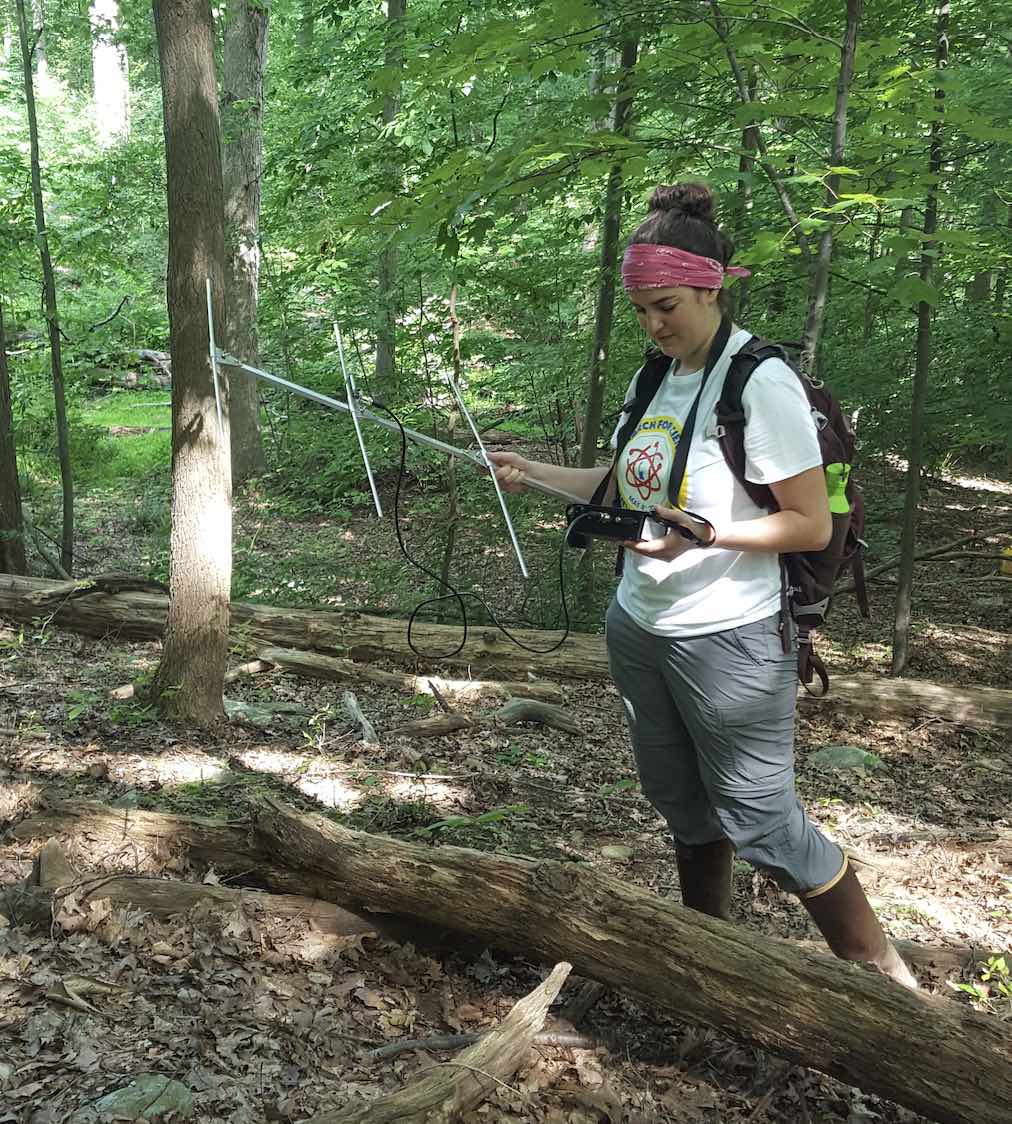Maria Strangas
In her free time, Maria enjoys hiking and having friends over for dinner. She is also a coordinator for the NYC pod of 500 Women Scientists!

Maria Strangas the manager of the Science Research Mentoring Program at The American Museum of Natural History. Maria is active in the science outreach community, and remains busy as a coordinator for the NYC pod of 500 Women Scientists; a group devoted to making science accessible, open, and inclusive!
Maria grew up in the small town of East Lansing, Michigan, where, “Michigan State University makes up half the population” and things are, “pretty different” from New York City!

Can you think of a specific time when you found science or pursuing science challenging?
“The most difficult parts for me have been when I’ve been low on motivation. Like most scientists I know, I go through periods where I really questioned the value of the work that I’m doing, and get discouraged because things move slowly. The line that connects fundamental research to real changes in society or policy can be very long . . .”

I’ve always been reinvigorated by working with students who remind me how cool it is to be really truly generating new knowledge for the world.
If you could give one piece of advice to young scientists or students, what would it be?
“Look for supportive, kind people, and find ways to work with them. It makes such a difference.”
Have you ever made something explode or otherwise wildly go wrong in lab?
“No explosions, but other things go wrong all the time! A big part of science, in my experience, is to learn to roll with the mistakes and surprises, and accept those errors and failures as part of the process. Some of my research has included testing the thermal preferences of lizards. To do that, I collected lizards from mountains in Brazil and took them back to the lab (still in Brazil). I had these long boxes set up with temperature gradients – cold on one side, warm on the other. The idea is that the lizards will select temperatures they’re comfortable in, which helps us understand how they use and can be affected by environmental temperatures in the wild. But one lizard found its way out of the box – somehow used its tail to prop itself up over the edge – and went for a walk through the department. A member of the custodial staff found the lizard as she was cleaning and saved it in another container until she figured out where it belonged. But then it escaped from that container too! We eventually tracked it down together, and have since modified our protocol and equipment to keep our lizards close.”

Why did you decide to come to NYC?
“I grew up in Michigan and went to college in upstate New York. I moved to NYC right after college, and it was a bit of a shock. I’ve always loved being outdoors and no one expected me to move to a big city. At first I was so uncomfortable constantly being around people but not really interacting with them. After nine years (!!) I’ve gotten used to it and have even come to appreciate it. But I still need a monthly out-of-the-city trip to clear my mind of the city chaos. When I first moved to NYC I worked two part time jobs for a few years: lab tech in a molecular ecology lab and after school teacher for 5th and 6th graders. From there I decided to get serious about this research thing and started a PhD at CUNY in Ecology and Evolution. I have now found a way to bring both interests together, running an after school program focused on doing science research – and part of my job is to keep doing my own research. I’ve stuck around in NYC because I’ve been able to find so many interesting things to do, and great people to spend time with.”
Do you plan to stay in NYC?
“Who knows! I’ve been pretty bad at predicting my life plan so far, so I’ll just have to wait and see 🙂.”
